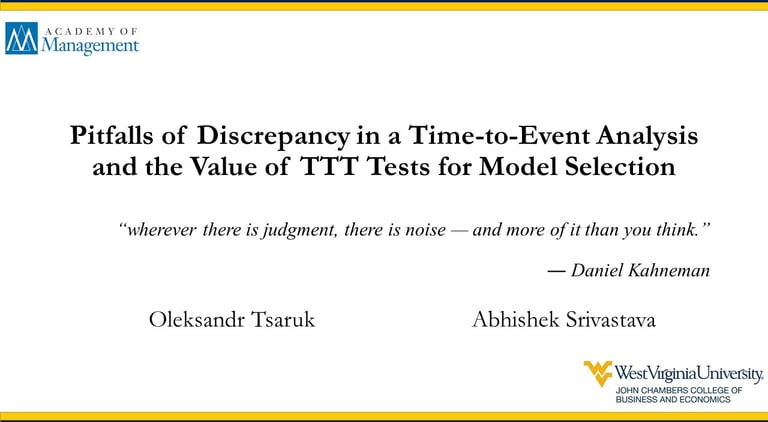Please visit my presentation at AOM’23
1019: New Methods for Studying Time-Related Issues. Location: 305, Hynes. Monday August 07, 10:00 AM - 11:30 AM
7/21/20231 min read


In this study, we use simulations to examine how varying hazard rates affect discrepancy in time-to-event analysis, which may result in model selection bias. The Cox proportional hazards model, which is semi-parametric, and the parametric survival regressions, are the main methodological tools used for time-to-event analysis in our field. However, they require careful statistical testing on the main assumption of proportionality of hazard or distribution shape.
We show via simulation of firm survival data how varying hazard rates increase discrepancy between parametric and semi-parametric models leading to potentially biased interpretations of the model’s fit, effect size of predictors, and their significance level. We illustrate the advantages of TTT (total time on test) statistics in detecting the correct shape of the hazard function and the model selection based on it. We show how using TTT statistics ex-ante reduces the risk of model selection bias in a time-to-event analysis. Based on our results, we provide recommendations for scholars using time-to-event analysis.